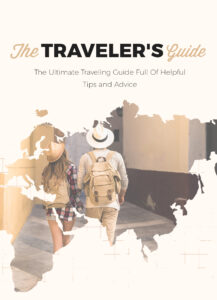Georgia and Armenia: Exploring Similarities and Differences

Looking for more amazing products? Check out our online store and explore our collection here! Happy shopping!
Before diving in, please note: This post is for informational purposes only. If you’d like to know more about how we approach topics, feel free to check out our friendly Disclaimer Page.
Hey there, amazing readers! 
We’re committed to delivering quality posts, and your support (even just sticking around despite the ads) means everything to us. So, bear with us, and thanks for helping us keep the good vibes rolling. Now, on to the fun stuff!
TRANSLATE BUTTON AT THE END OF THE ARTICLE
Georgia and Armenia, nestled in the heart of the South Caucasus region, are two neighboring countries with intertwined histories, yet each carries its own distinct identity.
While they share common cultural and geographical ties, their differences in climate, culture, and way of life are also notable.
Let’s dive into a detailed exploration of their similarities and differences across various aspects.
Geography and Terrain
Similarities
Both Georgia and Armenia are landlocked countries located in the scenic Caucasus Mountains.
Their terrain ranges from rugged mountains to lush valleys and rivers.
Outdoor enthusiasts flock to both nations for activities like hiking, skiing, and exploring the wild beauty of their diverse landscapes.
Differences
Georgia: Georgia’s geography is more varied, with lush forests in the west, arid plains in the southeast, and towering mountains in the north.
Additionally, it has a coastline along the Black Sea, offering beach access, especially in popular resort towns like Batumi.
Armenia: Armenia, on the other hand, lacks coastal access and is more landlocked.
Its terrain is dominated by high plateaus, volcanic mountains, and the breathtaking Lake Sevan—one of the world’s largest freshwater high-altitude lakes.
Climate and Weather
Similarities
Both countries experience four distinct seasons: winter, spring, summer, and fall.
The mountainous regions in both nations see cold winters with plenty of snow, while lower elevations enjoy milder winter conditions.
Differences
Georgia: The climate in Georgia varies dramatically.
Western Georgia, near the Black Sea, enjoys a humid subtropical climate with warm, humid summers and mild winters.
Eastern Georgia experiences a more continental climate with hot summers and colder winters.
Armenia: Armenia, being more landlocked, has a continental climate overall.
Summers are hot and dry, particularly in Yerevan, and winters can be harsh, especially in the higher altitudes with heavy snowfall and freezing temperatures.
Culture and Traditions
Similarities
Both Georgia and Armenia have ancient histories, deeply rooted in art, music, and architecture.
Family is central in both cultures, and hospitality is a strong value, with guests often treated like family.
Christianity has played a significant role in shaping both countries’ cultural identities, with ancient churches and religious festivals being key components of their traditions.
Differences
Georgia: Georgia is known for its polyphonic singing and traditional Georgian dance.
The country’s wine culture is legendary, and Georgia is recognized as one of the world’s oldest wine-producing regions.
Wine is a symbol of national pride.
Armenia: Armenia is famous for its khachkars (intricately carved cross-stones) and its iconic duduk music, recognized by UNESCO as part of world heritage.
Armenian culture reflects the resilience of a nation that has faced numerous historical challenges.
Etiquette and Social Norms
Similarities
In both countries, respect for elders and family-oriented values are paramount.
Hospitality is a key aspect of social life, and respect for religious customs is deeply ingrained in both societies.
Foreign visitors will generally experience warm welcomes in both nations.
Differences
Georgia: Social gatherings often feature elaborate toasting ceremonies, especially during the famous supra feasts.
Discover "The Traveler’s Guide: Your Ultimate Companion for Every Adventure
"

A designated toastmaster, or tamada, leads the celebrations with heartfelt toasts.
Armenia: While toasting is also part of Armenian culture, social gatherings tend to be slightly more reserved compared to the lively Georgian supras.
People and Population
Similarities
Both countries are relatively small in terms of population, with strong national pride and large diaspora communities across the globe.
Differences
Georgia: Georgia has a population of about 3.7 million people, the majority being ethnic Georgians, but with sizable Armenian, Azerbaijani, and Russian communities.
Armenia: Armenia’s population is smaller, at around 3 million people, and over 95% are ethnic Armenians.
The Armenian diaspora, however, is significantly larger than the population within the country.
Cost of Living
Similarities
Both Georgia and Armenia offer a relatively low cost of living, especially compared to Western Europe and North America.
Housing, food, and transportation are generally affordable, making both nations attractive to expats and travelers.
Differences
Georgia: The cost of living in Georgia, particularly in Tbilisi and Batumi, is slightly higher, largely due to the tourism industry and the country’s growing economy.
Armenia: Armenia tends to be more affordable, especially outside of Yerevan, where the cost of rent and groceries is lower compared to Georgia’s major cities.
Cuisine
Similarities
Both countries are known for their hearty, flavorful cuisines that center around bread, meat, vegetables, and dairy.
Meals are often social events, with recipes passed down through generations.
Differences
Georgia: Georgian cuisine features unique dishes like khachapuri (cheese-filled bread) and khinkali (dumplings).
The use of herbs and sauces, like the tangy tkemali, adds a distinctive flavor.
Armenia: Armenian cuisine emphasizes preserved and dried foods due to the harsher winters.
Dishes like khorovats (barbecue) and lavash (flatbread) are central to the Armenian diet.
Language
Similarities
Both countries have their own languages and alphabets, and Russian is widely understood due to their Soviet past.
Differences
Georgia: The Georgian language belongs to the Kartvelian family, with its unique alphabet unlike any other.
Armenia: Armenian is an Indo-European language with an alphabet that dates back to the 5th century.
Economy
Similarities
Both countries are developing their economies, with agriculture and tourism playing significant roles in their growth.
Differences
Georgia: Georgia’s economy is more diversified, with tourism, agriculture, and mining among the key sectors.
Its location along the Black Sea allows for stronger trade connections.
Armenia: Armenia’s economy relies heavily on agriculture and remittances from the diaspora.
The lack of access to the sea limits its trade opportunities compared to Georgia.
Religion
Similarities
Christianity is central to both nations’ identities, with ancient churches and Christian traditions deeply rooted in both cultures.
Differences
Georgia: The dominant faith is Georgian Orthodox Christianity, and the Georgian Orthodox Church holds significant cultural and political influence.
Armenia: Armenia was the first country to officially adopt Christianity, and the Armenian Apostolic Church is a defining aspect of Armenian national identity.
Conclusion
While Georgia and Armenia share many historical, cultural, and geographical ties, their distinct landscapes, climates, cuisines, and traditions set them apart.
Whether you’re drawn to Georgia’s diverse geography and rich wine culture or Armenia’s rugged beauty and ancient churches, both nations offer unique experiences worth exploring.

The Enlightenment Journey is a remarkable collection of writings authored by a distinguished group of experts in the fields of spirituality, new age, and esoteric knowledge.
This anthology features a diverse assembly of well-experienced authors who bring their profound insights and credible perspectives to the forefront.
Each contributor possesses a wealth of knowledge and wisdom, making them authorities in their respective domains.
Together, they offer readers a transformative journey into the realms of spiritual growth, self-discovery, and esoteric enlightenment.
The Enlightenment Journey is a testament to the collective expertise of these luminaries, providing readers with a rich tapestry of ideas and information to illuminate their spiritual path.
Our Diverse Expertise
While our primary focus is on spirituality and esotericism, we are equally passionate about exploring a wide range of other topics and niches 

To ensure we provide the most accurate and valuable insights, we collaborate with trusted experts in their respective domains 
Our blog originally focused on spirituality and metaphysics, but we’ve since expanded to cover a wide range of niches. Don’t worry—we continue to publish a lot of articles on spirituality! Frequently visit our blog to explore our diverse content and stay tuned for more insightful reads.
Hey there, amazing reader! 
Check out our store here and take a peek at some of our featured products below! Thanks for being awesome!











